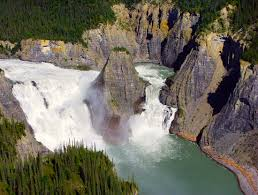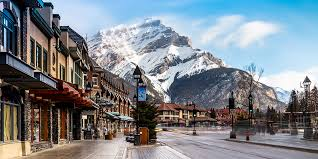The Canadian Imperial Bank of Commerce (CIBC) stands as one of Canada’s leading financial institutions, recognized for its comprehensive range of banking and financial services. Established in 1961 through the merger of the Canadian Bank of Commerce and the Imperial Bank of Canada, CIBC has built a strong reputation for innovation, customer service, and community involvement.
History
CIBC’s roots trace back to 1867 with the founding of the Canadian Bank of Commerce in Toronto. The bank quickly established itself as a major player in Canada’s banking landscape, expanding its services across the nation. The merger in 1961 with the Imperial Bank of Canada allowed CIBC to strengthen its position and broaden its service offerings. Over the years, the bank has continued to evolve, expanding internationally and enhancing its digital banking capabilities.
Services Offered
1. Personal Banking
CIBC provides a wide array of personal banking services tailored to meet the diverse needs of individual customers. These include:
- Checking and Savings Accounts: A variety of accounts designed for everyday banking, savings, and investments, complete with competitive interest rates and flexible features.
- Mortgages: CIBC offers a range of mortgage products, including fixed-rate and variable-rate options, designed to suit homebuyers at different stages of their lives.
- Credit Cards: The bank features a diverse lineup of credit cards, including those with cashback rewards, travel points, and low-interest options, catering to various spending habits and preferences.
- Personal Loans: Unsecured loans that provide customers with the financial flexibility needed for major purchases or unexpected expenses.
2. Business Banking
CIBC supports small businesses to large enterprises with a comprehensive suite of business banking solutions, including:
- Business Accounts: Specialized accounts tailored to the needs of businesses, offering features like online banking and cash management tools.
- Commercial Financing: Flexible lending solutions to support growth, including lines of credit, equipment financing, and real estate loans.
- Advisory Services: CIBC offers expert advice on financial planning, risk management, and business strategy to help businesses thrive in a competitive environment.
3. Wealth Management
CIBC’s wealth management services provide clients with the expertise needed to manage and grow their wealth effectively. These services include:
- Investment Management: Personalized investment strategies tailored to individual financial goals, risk tolerance, and market conditions.
- Retirement Planning: Comprehensive planning services to ensure clients can enjoy a comfortable retirement.
- Estate Planning: Assistance in creating a strategic plan for wealth transfer and legacy management, ensuring clients' wishes are honored.
4. Investment Banking
CIBC Capital Markets offers a range of investment banking services, such as:
- Mergers and Acquisitions: Expert advisory services to navigate complex transactions and maximize value.
- Equity and Debt Financing: Assistance with raising capital through public offerings, private placements, and other financing solutions.
- Market Research: In-depth analysis and insights to inform investment strategies and business decisions.
Commitment to Sustainability
CIBC is committed to sustainable banking practices and actively engages in corporate social responsibility initiatives. The bank has set ambitious environmental goals, including reducing its carbon footprint and supporting sustainable finance projects. CIBC is also involved in various community development initiatives, focusing on education, health, and economic empowerment.
Technology and Innovation
In an increasingly digital world, CIBC has prioritized technological innovation to enhance customer experience. The bank’s digital banking platform features advanced security measures, user-friendly interfaces, and a wide range of online services, including mobile banking apps that allow customers to manage their finances conveniently. CIBC is continually investing in fintech partnerships and digital solutions to remain competitive and meet evolving customer needs.
Conclusion
The Canadian Imperial Bank of Commerce (CIBC) has established itself as a prominent player in the Canadian banking landscape, known for its diverse range of services, commitment to sustainability, and focus on technological innovation. Whether you are seeking personal banking solutions, business support, or wealth management expertise, CIBC provides the tools and resources necessary to help you achieve your financial goals.





















